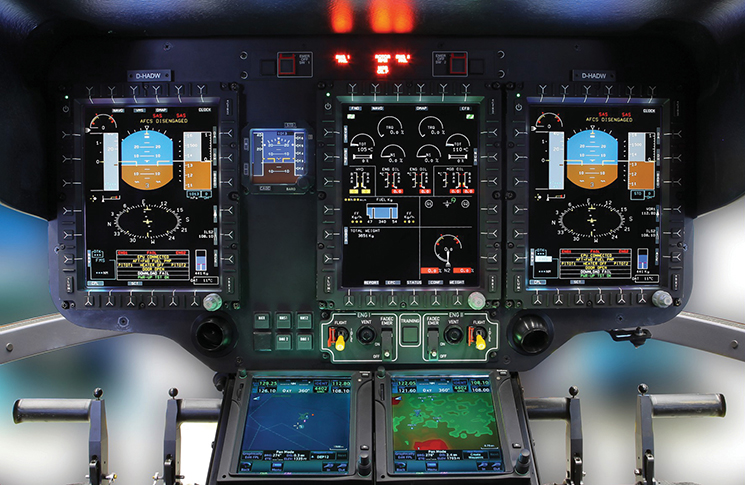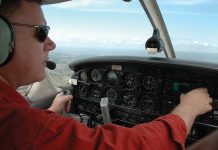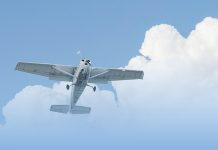A pilot is preparing for an IFR training flight. Planned flight time is one hour to conduct practice approaches, wholly within 25 nm of the departure aerodrome. The aerodrome has a TAF service. The nearest alternate aerodrome with a published IAP is 50 minutes flying time away.
1. Can this local IFR training flight be undertaken without the submission of a flight plan?
a. yes, if operating within 50 nm of the aerodrome of departure and arrival
b. yes, provided a SARTIME is nominated with ATS
c. yes, provided a SARTIME and flight note is left
d. no, all IFR flights in all classes of airspace are required to submit a flight plan
2. How long before estimated off block time (EOBT) should an IFR flight plan be submitted?
a. it must be submitted by 60 minutes before
b. it must be submitted within 30 minutes before
c. it is recommended to be submitted at least 30 minutes before
d. it is recommended to be submitted more than 60 minutes before
3. For a flight within Australian territory, how is an aerodrome forecast defined?
a. an authorised forecast for the aerodrome issued by the BOM labelled as a TAF
b. an authorised meteorological observation for an aerodrome
c. a meteorological observation with a statement of trend
d. any forecast issued by a responsible provider
4. If a TAF or other forecast is reviewed for the purposes of pre-flight weather assessment, which conditions apply?
a. the TAF or forecast must have been issued within 3 hours of the planned departure time
b. the TAF or forecast must have been issued within one hour of the planned departure time
c. the TAF or forecast must be valid for at least the departure time
d. if reviewed more than one hour before departure time, the PIC must obtain and review an update to that information before the flight begins
5. When pre-flight briefing is obtained more than one hour prior to EOBT, can pilots request updated authorised weather forecasts and reports before each departure via HF or VHF radio?
a. yes, but only when NAIPS pilot access or telephone is impractical
b. no
6. During taxi, flight services advise a TAF amendment is available for the aerodrome intended for use for the training flight. It now has a forecast more than SCT below the alternate minimum for the duration of the forecast. Does fuel for a destination alternate need to be on board?
a. no, as it will remain within 50 nm of the departure aerodrome
b. yes
c. no, as they can return and land safely within one hour after take-off
d. no, as the requirement for alternate fuel only applies before commencement of flight
7. If a destination alternate is required to be nominated, what must it have?
a. authorised weather forecast being either an aerodrome forecast or an ICAO landing forecast, with no relevant weather conditions below the alternate minima
b. no cloud forecast within 500 feet of the MSA
c. 2 or more instrument approaches that the pilot can legally conduct
d. a TAF service available, and is not forecast below the landing minima
8. What is cloud information on a TAF is restricted?
a. cloud with a base below 5,000 feet or the highest 25 nm MSA, whichever is greater and CB or TCU at any height
b. cloud forecast within 1,000 feet of the highest instrument approach minima
c. cloud forecast within 1,000 feet of the highest MSA
d. any cloud forecast below the highest grid MORA within 50 nm
9. A TAF is a coded statement of meteorological conditions expected at an aerodrome, within what radius?
a. 5 nm from the aerodrome reference point
b. 8 km from the aerodrome reference point
c. 8 nm from the aerodrome reference point
d. 10 km from the primary navaid
10. What is the term PROB in a TAF?
a. represents the likelihood of an occurrence
b. is not used if the estimated probability of an occurrence is less than 30%
c. if the estimated probability of an occurrence is equal to or greater than 50%, then reference to PROB is not included
d. all of the above
11. When is the term PROB used, with reference to poor visibility resulting from fog, mist, dust, smoke or sand?
a. there is a probability of less than 10 km visibility
b. there is a probability of less than 5 km visibility
c. there is a probability of less than 5 nm visibility
d. there is a probability of visibility less than the alternate minimum
12. How long before the forecast validity period do forecasters aim to issue a TAF3?
a. 2 hours
b. 15 minutes
c. 60 to 90 minutes
d. 30 to 60 minutes
13. Information on vertical visibility is provided on a TAF in lieu of cloud information under some conditions. What does 3000 FU VV009 represent on a TAF?
a. visibility 3,000 m varying between 2,100 m and 3,900 m
b. surface visibility of 3,000 m with a thick layer of smoke at 900 feet
c. visibility at 900 feet of 3,000 m
d. 3,000-feet layer of smoke or cloud with a vertical visibility of 900 feet
14. A TAF has the following QNH values specified: Q1013 1014 1012 1009. What QNH value should be selected as forecast QNH for the conduct of an approach 8 hours after the TAF validity period commences?
a. 1012
b. 1009
c. 1010
d. 1014
15. In order to conduct a Part 91 IFR flight below 10,000 feet, to an aerodrome for which no instrument approach procedure exists, the minimum forecast required for the planned destination aerodrome is?
a. grid point wind and temperature (GPWT) forecasts
b. graphical area forecasts (GAF) or a GAMET area forecast
c. an IFR flight can only operate to an aerodrome with a TAF service
To view the answers, go to the next page using the page navigation buttons below.





